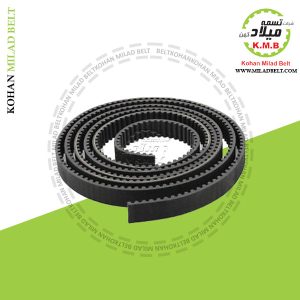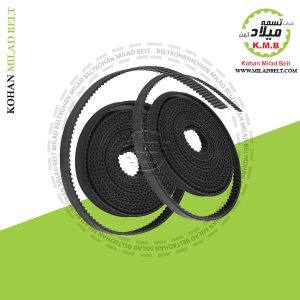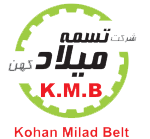Open circuit timing belt is a type of belt that is used in industrial machinery to transfer engine power into the system. These belts are usually welded on the bearing and are made of alloyed plastics or polyurethane. Join us to learn more about it.
Introducing the timing belt
This type of belt is sold in the form of a coil and then it is cut according to the required size. This feature makes the belt usable in all kinds of machines and systems and does not need to find exact size and diameter. By using an open circuit timing belt, you can transfer the engine power into the system and use it in the correct operation of your machinery.
The open circuit timing has advantages such as resistance to grease, oil and wear and can be used in high revolutions when the engine is running. Also, these belts are exposed to high heat and must maintain their strength.

Application of timing belt
Open circuit belt has wide applications in various industries. Its most important uses are:
Glass industry: open circuit timing belt is used in glass industry. These belts are used as the main part to transfer glass in the glass production and cutting process.
Automotive Industry: Timing belts are used in car engine systems to coordinate the movement of internal engine components. These belts are used to align clutch and rotor shafts in diesel and gasoline engines.

Technical Specifications
The open circuit belt has several important technical characteristics, which are:
Width and length of the belt: The physical dimensions of the belt are determined in the form of width and length and can be changed according to the needs of the application.
Carrying capacity: The timing belt of the open circuit must be able to bear and transmit the power of heavy loads without slipping and with high precision. The bearing capacity of the timing belt varies depending on its structure and material.
Construction materials: open circuit timing belt can be produced from various materials such as polyurethane, polyvinyl chloride (PVC) cavillary or polyester.

